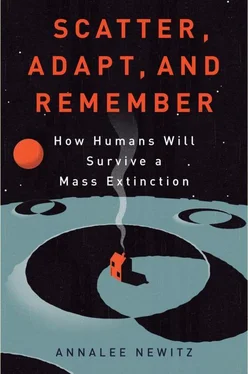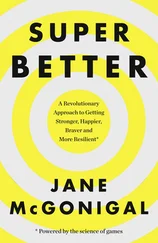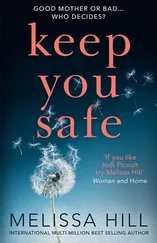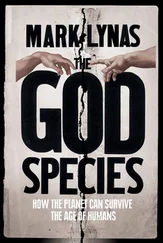The Proterozoic Eon (2.5 billion–540 million years ago): Oxygen Apocalypse
Earth is roughly 4.5 billion years old, and for most of its life the atmosphere would have been noxious for humans and all the creatures who live here now. Vast acidic oceans roiled in what today’s environmental scientists would call an extreme greenhouse climate: the air was superheated and filled with methane and carbon. Our planet’s surface, now covered in cool water and crusty soil, was bubbling with magma. The solar system had formed relatively recently, and chunks of rock hurtled between the young planets—often landing on them with fiery explosions. (One such impact on Earth was so enormous, and threw off so much debris, that it formed the Moon.) It was on this poisonous, inhospitable world that life began.
About 2.5 billion years ago, early in an eon that geologists call the Proterozoic, a few hardy microbes who could breathe in this environment drifted to the surface of the oceans. These microbes, called cyanobacteria (or blue-green algae), knit themselves into wrinkled mats of vegetation. They looked like black, frothy coats of slime on the water, trailing long, feathery tendrils beneath the waves. All that remains of this primordial ooze are enigmatic fossils that hide inside a distinctive type of ancient, spherical rock called a stromatolite. If you slice a stromatolite down the middle, you’ll see thin, dark lines curving across its inner surface like the whorls in a fingerprint—these are all that remain of those algal mats. Only a few people in the world would recognize them as the traces of impossibly old life that they are, and Roger Summons is one of them. He’s a geobiologist at the Massachusetts Institute of Technology who has spent decades studying the origins of life on Earth, as well as the extinction events that wipe it out.
An Australian with a dry sense of humor, Summons has an office you can only reach by walking through his lab, a big, airy room full of tanks of hydrogen and bulky mass spectrometers that look like old-school Xerox machines covered in tubes. When I visited him to talk about ancient Earth, he plucked some slices of stromatolite from the top of a filing cabinet to show me the traces of algae that spidered across their surfaces. “This one is eight hundred million years old, and this one is two-point-four billion,” he said, pointing at each ragged half sphere of rock. “Oh, and this one is probably three billion years old, but it’s a crap sample.”
Even with a “crap sample,” Summons can pin a date on the fossils of creatures who lived more than 2 billion years ago by examining the sediments that have preserved them. In his lab, researchers grind up ancient rocks, subjecting them to vacuum, freezing, lasers, and a strong magnetic field before running them through the mass spectrometers. At that point, often nothing remains of a stromatolite but ionized gas. And that’s exactly what mass spectrometers need to decode the atoms in each sample. Atoms in minerals decay at a fixed rate, and reading the state of a rock’s atoms can tell scientists how long it has been since it formed. Geologists don’t put fossils themselves beneath the laser. They use machines like the ones in Summons’s lab to figure out the ages of the rocks next to the fossils. Call it dating by association.
Knowing when the oldest stromatolites were created helps us date an event which changed Earth forever. The mats of algae that became stromatolites weren’t just methane-loving scum. They were also filling the atmosphere with a gas that was deadly to them: oxygen. This is how the first environmental disaster on Earth began.
Just like plants today, ancient blue-green algae nourished themselves using photosynthesis, a molecular process that converts light and water into chemical energy. Cyanobacteria were the first organisms to evolve photosynthesis, and they did it by absorbing photons from sunlight and water molecules from the ocean. Water molecules are made up of three atoms—two hydrogen atoms and one oxygen atom (hence the chemical formula H 2O). To nourish themselves, the algae used photons to smash water molecules apart, taking the hydrogen to use as an energy source and releasing the oxygen molecules. This proved to be such a winning adaptation to Earth’s primordial environment that cyanobacteria spread across the face of the planet, eventually exhaling enough oxygen to set off a cascade of chemical processes that leached methane and other greenhouse gases from the atmosphere. The dominant form of life on Earth ultimately released so much oxygen that it changed the climate dramatically, soon extinguishing most of the life-forms that thrived in a carbon-rich atmosphere. Today we worry that cow farts are destroying the environment with methane; back in the Proterozoic, it’s certain that algae farts ruined it with oxygen.
Greenhouse Becomes Icehouse (and Vice Versa)
What happened after the rise of oxygen was an event shrouded in mystery until the late 1980s, when a Caltech geologist named Joe Kirschvink asked his student Dawn Sumner to research a rock whose existence seemed to be impossible—at least, given the prevailing theories about early Earth. Found near the equator, the rock’s surface was scored with marks that suggested it had once been scraped by the weight of a slow-moving glacier. In a short paper that eventually revolutionized geologists’ understanding of climate change, Kirschvink suggested that this rock offered a window on a late-Proterozoic phenomenon he called Snowball Earth.
Snowball Earth is what happens when our planet’s climate enters a very extreme “icehouse” state, the opposite of a greenhouse. A carbon-rich atmosphere can heat our climate up into a sweltering greenhouse, but an oxygen-rich atmosphere cools it down and causes what’s called an icehouse. Throughout its life, the planet has vacillated between greenhouses and icehouses as part of a geological process called the carbon cycle. Put in the simplest possible terms, a greenhouse happens when carbon is free in the air, and an icehouse occurs when carbon has been locked down or sequestered in the oceans and rocks. During an icehouse, ice collects at the poles, sometimes creeping down into lower latitudes during an ice age. But our recent ice ages were nothing compared with Snowball Earth.
Two billion years ago the sun was dimmer than it is today. As more and more cyanobacteria pumped out oxygen, the whole place began to cool down. Because the sun was a relatively weak heat source, this effect was magnified into a “runaway icehouse.” Ice from the poles began to spread outward, solidifying the top layer of the oceans and burying the land beneath vast, frozen sheets. The more ice that formed, the more it reflected sunlight—lowering the planet’s temperature further. Finally, ice stretched from the poles nearly all the way to the equator, pulverizing rocks beneath its weight. If you looked at Earth from space at that time, you’d have seen a slushy white ball, its circumference banded by a narrow equatorial ocean of algae-infested sludge. At that moment in geological history, our planet resembled Saturn’s icy moon Europa. It was an alien world called Snowball Earth.
I visited Kirschvink at the California Institute of Technology to find out what happened next. In the basement of the geology building, his generously sized desk was piled with fossils, family photographs, papers, and his prized possession, a cheap plastic vuvuzela from South Africa. “This is real!” he enthused, gesturing at the instrument whose droning sound annoyed and delighted audiences during the 2010 World Cup. Kirschvink lit up when he talked about the provenance of objects, whether pop culture ephemera or 3-billion-year-old fossils. Maybe it was his off-kilter imagination that allowed him to look for environmental patterns in Earth’s history that nobody had thought possible.
Читать дальше






![Аннали Ньюиц - Автономность [litres]](/books/424681/annali-nyuic-avtonomnost-litres-thumb.webp)





